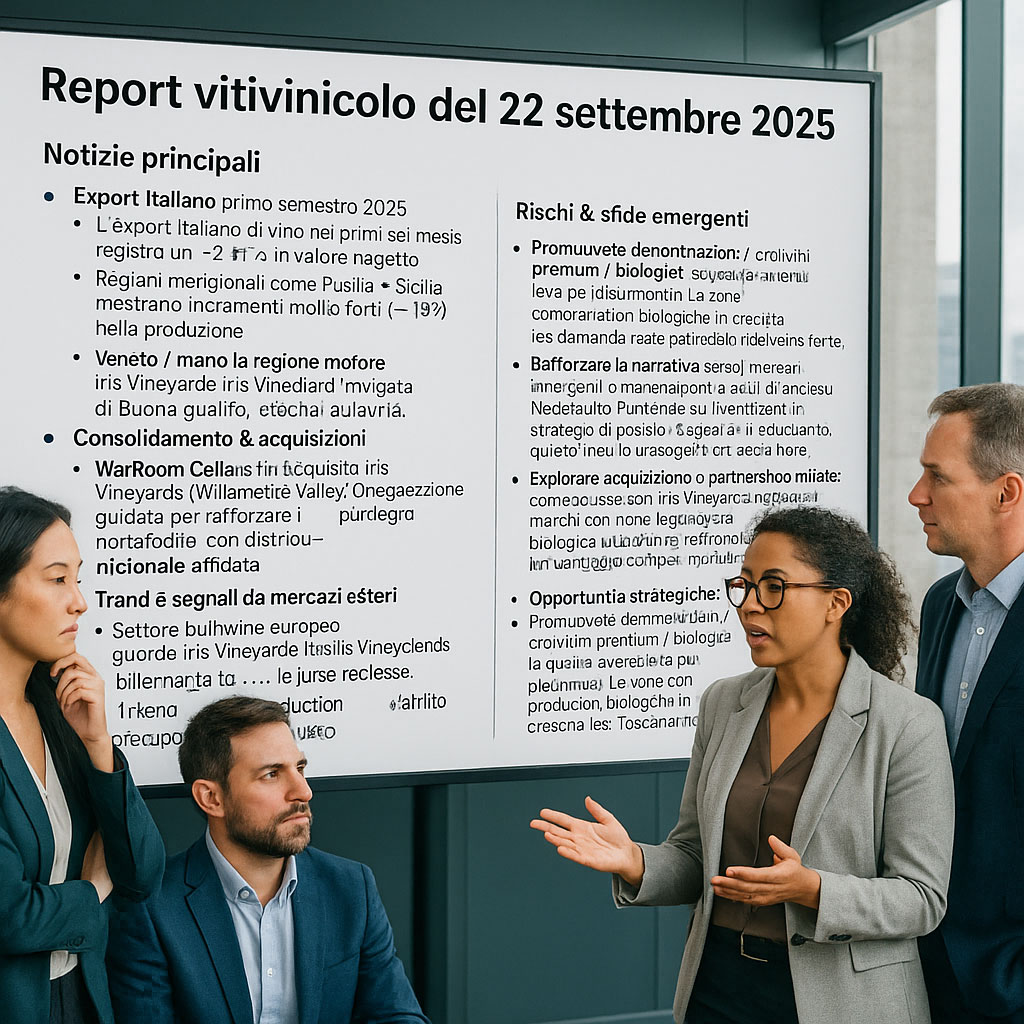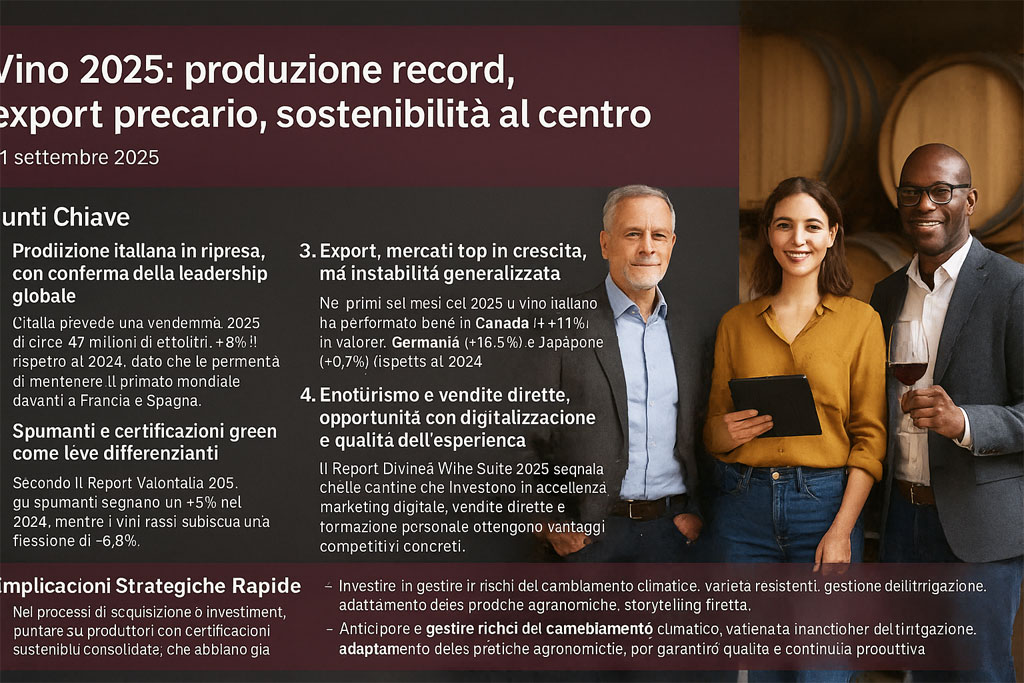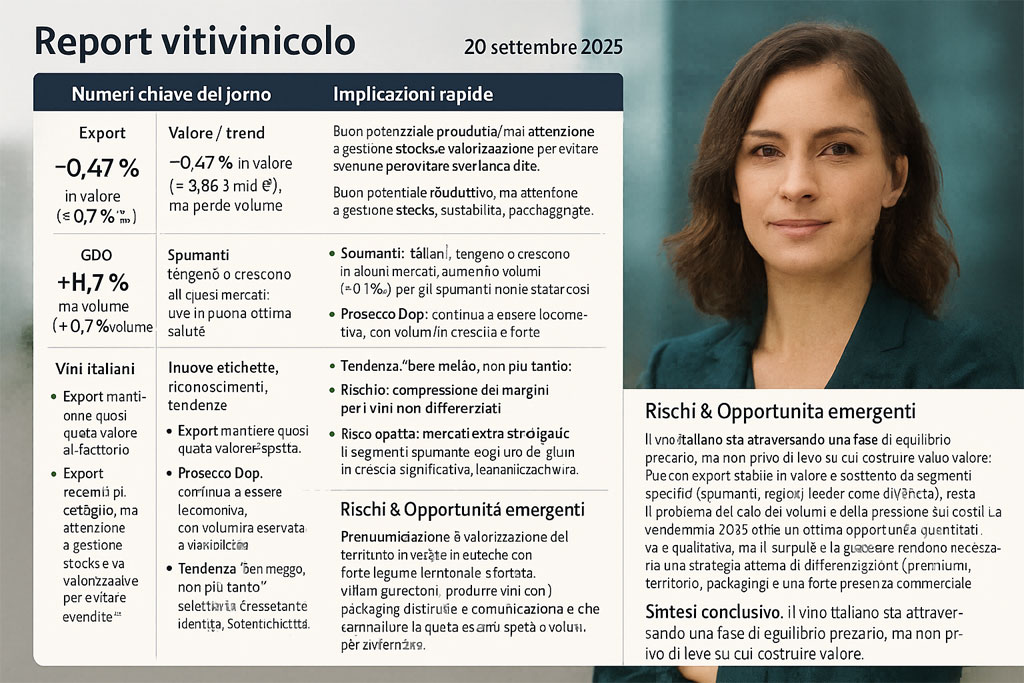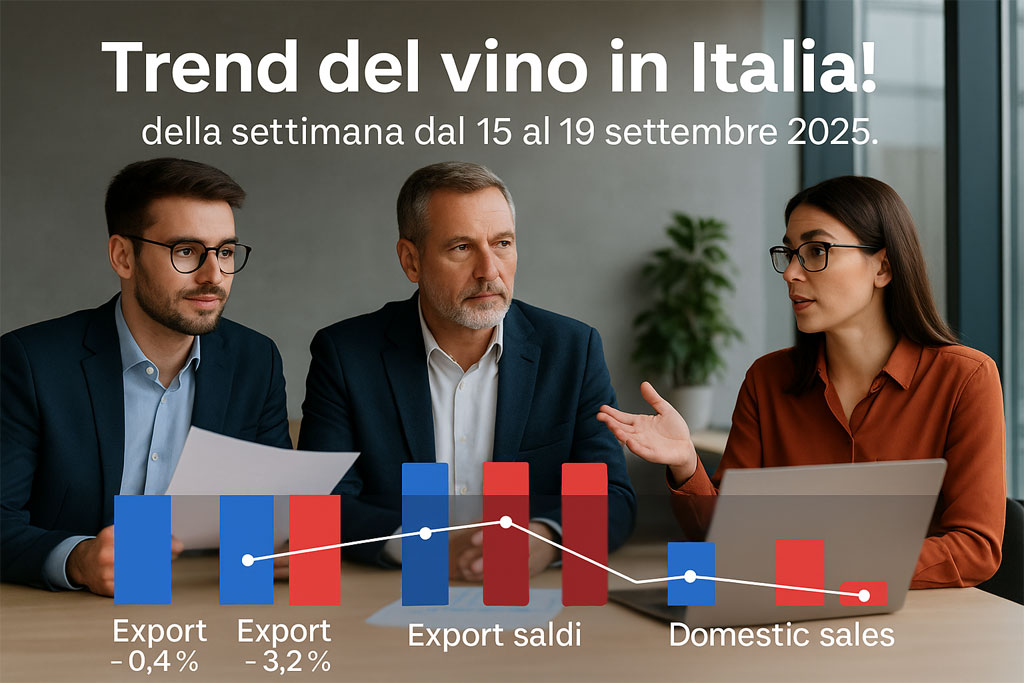Here’s this morning’s updated report on the world of wine and wineries—operational insights, strategic signals, and risks to monitor.
Main news
- Italian exports first semester 2025
- In the first six months, Italian wine exports recorded a -0.47% in value compared to the same period in 2024, while exported volume fell by -3.1%.
- The US market continues to be central, showing growth driven mainly by pre-tariff stockpiling.
- Veneto remains the driving force: 1.5% in value, with export share rising to 37.1%. Sparkling wines remain almost stable in value, with only slightly positive volumes.
- 2025 Italian Harvest: Abundant and (mostly) Good Quality
- Production estimated at ~47.4 million hectoliters, 8% vs 2024.
- Southern regions such as Puglia and Sicily show very strong increases (≈ 19%) in production.
- Some areas, such as Tuscany, are forecasting a reduction compared to last year for certain varieties (e.g. Sangiovese), but they remain above the recent average.
- Organic production is growing (Tuscany) and the general qualitative balance is improving, although local disparities due to weather conditions persist.
- Consolidation & Acquisitions
- WarRoom Cellars has acquired Iris Vineyards (Willamette Valley, Oregon). The acquisition is designed to strengthen the portfolio, with national distribution handled by Total Beverage Solutions.
- Heineken Beverages is making significant moves to revitalize its wine brands, including Nederburg, through investments and more aggressive positioning strategies.
- Trends and signals from foreign markets
- The European bulk wine sector is looking closely at the 2025 harvest season: surplus production in some areas, prices under pressure.
- In Australia, despite the reduction in supply, price pressures persist. The vineyard market also remains “quiet”—little movement, with decisions on the most valuable varieties pending.
Emerging Risks & Challenges
- US Tariffs / Trade Policy : Stockpiling has mitigated the effects for now, but buyers and producers signal that real demand could weaken over time, especially after protectionist measures are enacted or announced.
- Global market saturation : With increasing production and stagnant or declining demand in some markets, the risk of oversupply in less diverse categories increases. Logistics, energy, and environmental costs are variables that compress margins.
- Regional Varieties & Quality : Differences in yield and quality between regions could penalize less powerful or less powerful brands if they don’t maintain rigorous standards; vigilance is needed regarding early grapes, water stress, and bunch health.
Strategic opportunities
- Promote appellations/crus/premium/organic wines : quality becomes a lever for distinctiveness. Areas with growing organic production (e.g., Tuscany) have scope for promoting them with a strong brand.
- Strengthen the narrative around emerging markets, those less exposed to tariffs (or those that absorb them better). Diversify not only geographically, but also in terms of consumption: “lighter” wines, aromatic whites, wines destined for the HoReCa market versus retail.
- Explore targeted acquisitions or partnerships: As with Iris Vineyards, merging brands with strong local reputations can help achieve economies of scale and distribution.
- Cost optimization & operational improvement: Given the pressure on margins, companies that already invest in advanced agronomy, traceability, sustainability, and efficient logistics will have a competitive advantage.





